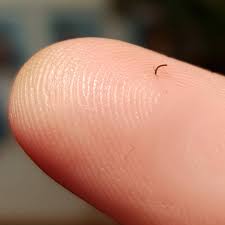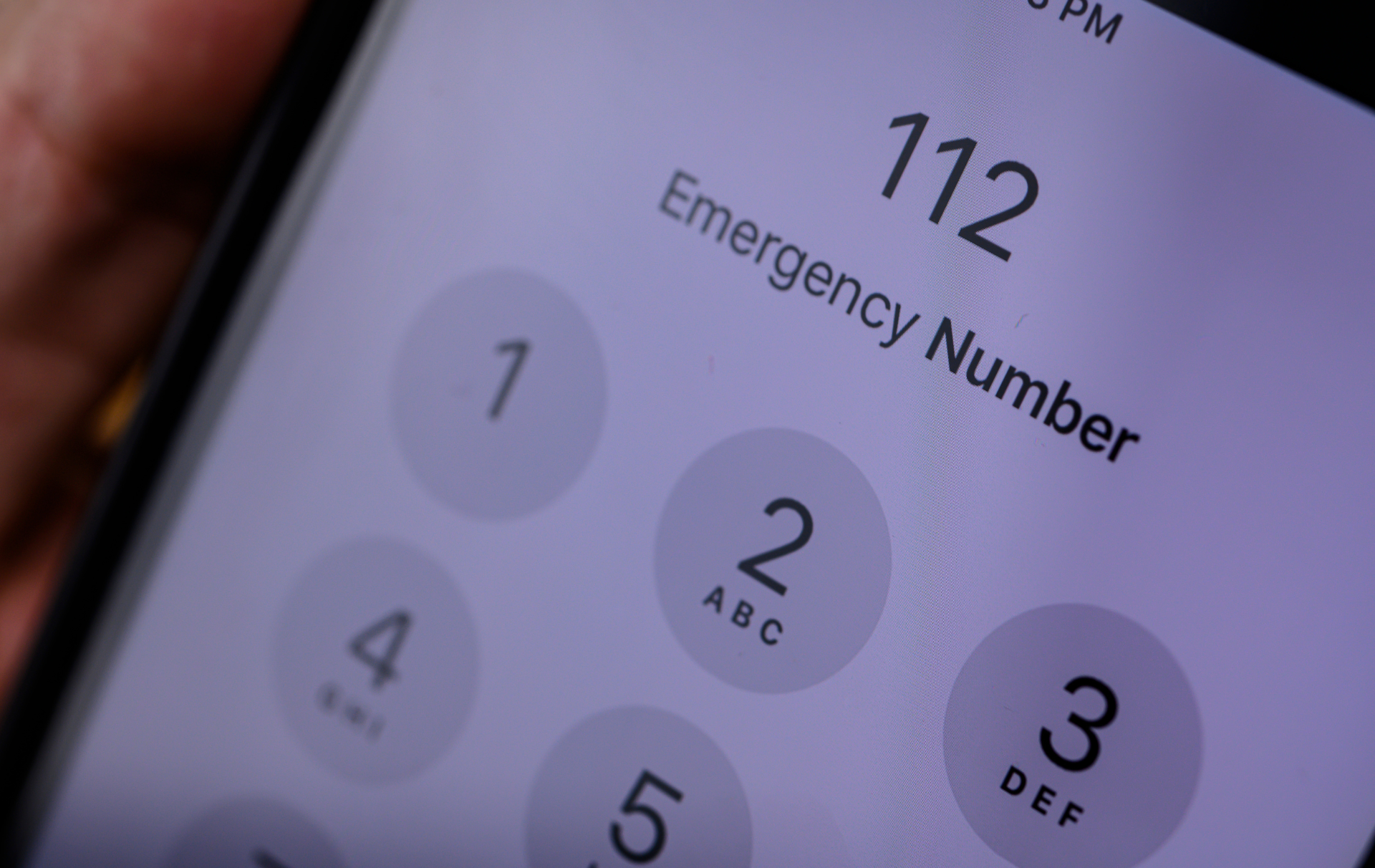Blog Layout
Getting First Aid Trained Isn't a Legal Risk to You—It's a Lifeline to Others
Carolyn Port • Feb 21, 2024
The title comes from a recent LinkedIn post from a fellow first aid trainer, and reminded me that there are still many myths circulating about the pitfalls of providing first aid to others.
Are first aiders open to be prosecuted or sued for their actions?
In short, no, as long as some basic elements are satisfied.
In 2015, the UK introduced a ‘Good Samaritan’ law called the Social Action Responsibility and Heroism Act (SARAH Act), aiming to provide additional reassurance and legal protection for individuals who intervene in emergencies to help others. The Act covers more than just first aiders, but its implications for people willing to provide immediate medical help are significant.
What factors have to be in place to be covered by the Act?
Providing first aid – whether to a friend, colleague, relative or complete stranger – holds no culpability as far as first aiders are concerned, as long as the first aider:
- gains consent (if the casualty is able to give it – it is assumed if they are unconscious);
- acts within their level of training (i.e. doesn’t try to do something which they are patently not qualified to do – actions such as CPR or using a defibrillator do not require a qualification); and
- is not acting maliciously.
Why was the Act passed?
To give peace of mind to rescuers and enable them to help without fear of being sued or prosecuted for any unintended consequences of their actions. Understanding the SARAH Act and its impact on the protection of first aiders is crucial in creating a society where emergency responders feel able to assist others without the fear of facing legal repercussions for their efforts.
No individual has ever been successfully sued in the UK for providing first aid, but the fear of it being possible has long concerned individuals and caused hesitation in providing aid – which ultimately could lead to a less favourable health outcome or even death. The key provisions of the SARAH Act seek to address this by:
Encouraging Social Action:
The Act aims to promote the culture of social responsibility and heroism by recognising and protecting individuals who act to help others in need.
Consideration of Circumstances: Courts are directed to consider the circumstances in which an individual took action to assist others, including whether they acted reasonably, responsibly, and with the intention of helping others or preventing harm. Factors such as the urgency of the situation, the availability of resources, and the level of training and expertise of the first aider are all considered.
Reduction of Liability:
The Act provides for a reduction in liability for individuals who act in a way that is considered reasonable and responsible in the context of the situation. First aiders who provide assistance in good faith and within the scope of their training are afforded legal protection, even where the actions may not have been successful or where unintended consequences occur despite reasonable efforts. The Act does underline the importance of first aid training and certification by recognising the value of skilled intervention in emergencies.
In conclusion…
So, the key takeaways from this are:
- Stop and help! You are protected by the SARAH Act for your actions.
- Consider first aid training – the Act recognises and promotes its importance and it will give you more confidence and reassurance to help others.
- Have a basic first aid kit you can use – this may provide importance resources in an emergency.
Winterbury Training are always willing to provide guidance and support on the right level of first aid training for your circumstances, so why not get in touch? Email info@winterburytraining.co.uk
or call us on 07584 732119.

by Carolyn Port
•
04 Jan, 2023
Changes to the age of a ‘Child’ for the purposes of CPR There has been one important first aid update since my last blog, which is that for the purposes of CPR, casualties aged from 1 to 18 are now classified as ‘children’ and the child protocol should be followed. This has changed from the previous age definition of ‘1 to puberty’ for children. What does this mean in practice? • CPR should start with 5 rescue breaths for everyone aged 0-18, followed by 30 compressions then 2 rescue breaths continuously until medical help arrives. • If you need to leave your casualty to phone for help do one minute of CPR first, before you leave them to get help (5 rescue breaths then about 3 times through the 30:2 protocol takes around a minute) Why do children have these 5 initial rescue breaths, and why give a minute’s CPR before getting help? Clinical research data shows that it is more likely to be a breathing issue that has caused a child to stop breathing, whereas it’s more likely to be a heart issue that has caused an adult to stop breathing. Rescue breaths are therefore critical to the chances of a good outcome with a child requiring CPR and for this reason were not removed from the CPR protocol even during COVID when adult breaths were temporarily removed. In addition children don’t hold onto their oxygen as well as adults therefore need the input of oxygen from you is more important. Giving 5 rescue breaths at the start of child CPR and a minute’s worth of aid before leaving them for help is therefore more likely to have a positive impact as your breaths could result in a swift improvement and possibly start them breathing again. Why has the age of a ‘child’ changed? Clinical research data has shown that up to age 18 (and actually slightly beyond) the cause of the collapse is a breathing issue, therefore the child protocol is likely to be more effective. How many hands should I use for compressions? Use as many as you need to make the compressions effective. Up to 1 year old, use 2 fingers in the centre of the chest; from age 1 upwards use one hand or two hands with fingers interlinked according to how strong you are! You’re aiming to compress down about a third of the chest wall. As a guide, most people can compress with one hand to around 10 years of age or so but if you need to use two hands, then do! What about the positioning of the defibrillator pads? Up to the age of around 8, pads should be placed in the centre of the chest and the centre of the back. Use paediatric pads if the unit has them, or switch to the paediatric setting. If there is no switch and only adult pads the unit can still be used on the child, just place the pads in the centre front / centre back positions. Over the age of 8 place the pads in the position shown on the unit / pads with the unit in adult mode (one pad just under the right shoulder on the chest, the other on the left hand side of the body about halfway down – the heart should be roughly in the centre of the gap between the pads). Follow the audible instructions as normal. What if I don’t know how old the ‘child’ is? Use your best guess – no need to find their birth certificate before deciding where to place the pads or whether to treat them as a child or adult. Remember that anything you do is better than nothing!

by Carolyn Port
•
11 Mar, 2022
Splinters are always a hot topic on first aid courses! Can we pull them out? Why? Why not? Who says? Qualified first aiders can pull splinters out – this is made clear by the HSE (see their MythBuster on splinters in schools at https://www.hse.gov.uk/myth/myth-busting/2014/case299-teachers-removing-childs-splinter.htm) . BUT many schools have a policy that splinters must not be removed. So who is right? A school policy stating that they will not pull out splinters over-rides the HSE position that splinters can be removed, and this is why the myth abounds that first aiders cannot pull out splinters . Why do schools have this in their policy? The most often cited reason is that we shouldn’t pull anything out of a wound in case it is ‘plugging’ a bleed, but in the case of a small splinter this is highly unlikely. Arteries are buried deep beneath the skin’s surface – far beyond the reach of a small splinter. Even though veins are nearer the surface (and can lead to significant bleeds) a splinter would not cause more than a drop of blood to be lost even if it was a very long splinter! Another reason sometimes given is that first aiders cannot ‘dig’ to remove a splinter – and the HSE agree. An embedded splinter with no part exposed to be gripped by tweezers should be left to a parent or guardian to be removed, but this doesn’t stop us removing those which have an exposed section with tweezers. So why SHOULD we pull out splinters? On the flip-side, what happens if you leave a splinter in a child’s skin until home-time? A splinter is usually from something which may well be dirty, for example from a fence, the school playground, field or on a forest school activity which could then lead to infection. In addition, it can be jolly tender if left for a period of time! But we cover it with a plaster – surely this will stop the infection? Covering a splinter with a plaster will merely encourage the infectious cells to reproduce – the infected material is already inside the wound (so a plaster won’t protect from it) and the claggy, moist environment created with a plaster is perfect for the growth and spread of infection. If the splinter has reached a capillary (blood vessel) there is now the potential for a infection through the blood – SEPSIS (you may have heard this referred to in the past as blood poisoning or septicaemia). SEPSIS kills 1,000 people in the UK EVERY WEEK! – more than the top three cancers combined. Leaving the splinter there rather than removing it and flushing the wound out is increasing the chance of sepsis – cuts and wounds are the 4th top cause of sepsis. The longer the splinter remains in the skin, the higher the risk. So, what should we do? My suggestion would be to amend the school policy to something similar to: • ‘we will remove a splinter if the child wishes us to do so, and • there is enough of the splinter exposed to enable it to be gripped by tweezers In the event that splinter is firmly embedded and cannot be gripped by tweezers or the child does not wish us to pull it out we will telephone the parent to inform them that their child has a splinter and request they attend school to remove it.’ Having a stark policy of ‘we do not remove splinters’ cuts off any permission that may be given over the telephone or actions you can take in extenuating circumstances and may be detrimental to the health of the child. What can a parent do that we can’t? The parent can break the skin to remove the splinter, or administer antiseptic cream (which a school cannot do) and cover with a plaster which will help to draw the splinter out. If the splinter is still there at the end of the school day, they could soak the affected area of skin which will help to soften it to squeeze the splinter out. If you would like more help or advice please do contact us at info@winterburytraining.co.uk. You can find out more about sepsis from Sepsis Research (www.sepsisresearch.org.uk) or the Sepsis Trust (www.sepsistrust.org).

by Carolyn Port
•
24 Nov, 2021
The official EYFS requirements from Ofsted remains that you must have at least one fully trained (2 day) Paediatric First Aider available to deal with first aid incidents where you have pupils of reception age (https://bit.ly/3FH14RG), and government guidance on first aid in schools states you must have first aid provision available at all times while people are on school premises and also off the premises on school trips (https://bit.ly/3rlIJWz). It is obviously good practice to have at least 3-4 full Paediatric trained colleagues to provide flexibility for illness, absence, training courses, PPA cover etc. The fully trained paediatric staff can then be further supported by ‘sufficient and adequate’ additional first aiders in the school (the number to be determined by the school according to their first aid needs assessment). In practice these are usually staff who have completed a one-day Emergency Paediatric First Aid course. Secondary schools will have additional hazards in their curriculum and environment, such as science labs, sporting activities with more risk of serious injury, hazardous equipment in art and/or DT and heavier pieces of equipment. In addition, communities tend to be much larger, with high numbers of pupils and staff, which also bring a higher risk of an incident occuring. Health and safety legislation additionally places a duty upon employers to have first aid provision available for everyone in the school, including the headteacher, teachers, non-teaching staff, children, visitors and contractors, therefore some form of first aid training for adults is a requirement. This can be achieved by some colleagues holding the one-day Emergency First Aid at Work qualification (which can be done concurrently with the one day paediatric qualification above). However, there is an increasing move amongst schools to ensure they have at least one member of staff with the full 3 day First Day at Work qualification, and this is being reflected in the messaging in health and safety conferences and meetings, and in the guidance being provided by local authorities and within Academy Trusts. In particular, the additional day covers heart attacks, strokes, angina, crush injuries, chest and abdominal injuries and deeper training on areas such as bleeding. It is completely feasible that some of these may occur within a school setting to school staff and volunteers, and the governors / trusts are responsible for ensuring forseeable first aid incidents can be adequately dealt with by trained members of staff. 3 days out of the workplace is a commitment, but it is possible to combine this 3 day course with the full Paediatric qualification and obtain both in the same timeframe. You could therefore send a staff member who is due to renew their Paediatric qualification anyway, or train a colleague who can then offer further flexibility in the Paediatric first aid requirement. All of the qualifications mentioned last for 3 years and annual refreshers can be accessed. For further guidance on these requirements in your particular school please do not hesitate to get in touch - we can help with a needs assessment which is specific to your circumstances and ensure you have adequate cover to meet your obligations. Carolyn Port, Director, Winterbury Training info@winterburytraining.co.uk 07584 732119

by Carolyn Port
•
19 Sept, 2021
People who have received one or both vaccinations are reporting different symptoms than the high temperature, cough and loss of taste/smell which originally characterised the virus. The top 4 symptoms in these groups are now: Headache Sore throat Runny nose Sneezing Sneezing is much more likely to be reported as a symptom in people who are vaccinated versus those who are unvaccinated. Persistent cough is now at number 5 for those who are single jabbed, and at number 8 in those double jabbed, and a high temperature is at number 12 yet still in the top 5 for people who are unvaccinated. These figures are according to the UK-wide Zoe COVID study with around a million people reporting their symptoms daily to build knowledge of how the virus symptoms are changing (https://covid.joinzoe.com/post/new-top-5-covid-symptoms). CORONAVIRUS IN CHILDREN Early September data showed around 18,000 cases in 0-18s daily, with a huge surge in Scotland where schools returned in mid-August. (https://covid.joinzoe.com/). Symptoms reported via the Zoe study are variable, sometimes dependent upon age, and children are more likely to be asymptomatic. Top symptoms reported include headache and fever , then traditional flu-like symptoms such as a runny nose, sore throat, coughs etc. Tummy pain and digestive upsets are also more likely. IMPLICATIONS FOR EARLY YEARS SETTINGS Studies on childhood COVID are less wide-reaching than adult studies, but it seems that children could exhibit either the early traditional symptoms or have the more common sneezing and headache symptoms. This makes things tricky in your setting, because we all know these symptoms could belong to any number of autumn and winter viruses as well as Coronavirus! Our advice would be that in younger preschool children and babies you ask parents to regularly (at least twice weekly) test using LFT devices (available free from https://www.gov.uk/order-coronavirus-rapid-lateral-flow-tests) and if they show a positive result, obtain a PCR test and keep children at home if they exhibit any symptoms at all, also taking them for a full PCR test. In older children home LFT tests can be carried out twice weekly as a precaution if they have no symptoms, but they should be taken for a full PCR if symptoms develop.

by Carolyn Port
•
18 Apr, 2021
The start of summer heralds warmer weather, longer days, brighter colours…. And the resurgence of hay fever and with it, an increase in asthma attacks. Asthma is a condition which leads to wheezing and a shortness of breath as the airways narrow and mucus secretions increase. Asthma sufferers find it increasingly difficult to breath out the waste carbon dioxide from their lungs and therefore it becomes hard to inhale fresh oxygen. Breathing becomes rapid and shallow and can eventually lead to unconsciousness and in very severe attacks, can even be fatal – 3 people die of asthma every day in the UK. Asthma attacks are always caused by a trigger, which can vary from person to person. These include allergies, animals, hay fever, smoke or pollution, weather (particularly moving from warm to cold air), exercise and stress. Pollen is a very common trigger and at this time of year with pollen levels on the increase the number of asthma attacks can increase. Tree pollen levels are highest between late March and mid-May; grass pollen is responsible for around 95% of people’s hayfever, with levels highest between mid-May and July. When grass pollen levels are high the number of people hospitalised due to asthma attacks increases. Finally weed pollen levels run highest between the end of June to September. ACTIONS FOR SCHOOLS With one in eleven children suffering from asthma there are likely to be at least 2-3 asthmatics in every class. • Know who the asthmatics are in your class • Ask parents for information about their child’s asthma triggers • Keep a reliever inhaler in the classroom, and a spare in the school office (schools can purchase spare inhalers e.g. Eurekadirect.co.uk sell salbutamol inhalers for around £5 each) • Check your inhalers regularly to ensure they are in date • Reliever inhalers are usually blue; use these with a spacer if possible as this method delivers the maximum amount of medication straight to the lungs (spare disposable spacers can also be purchased by schools) • Keep an eye on the weather – and particularly the pollen – forecasts as we head into summer, and ensure inhalers are to hand on high pollen days particularly when taking part in outdoor activities • If you notice their asthma becoming more troublesome, talk to the pupil’s parents to ensure they are receiving the correct dose of any medication, particularly the ‘preventer’ reliever medication which is normally delivered by brown / red / pink inhalers every morning and evening to help prevent acute attacks HOW TO TREAT AN ASTHMA ATTACK • Sit the pupil down, bending forward with their hands on their knees • Give an initial two puffs of their inhaler ten seconds apart, through a spacer if possible. • Give an additional puff every minute until their attack has resolved • If their symptoms do not appear to be getting any better, or are getting worse (Asthma UK have some great, short videos demonstrating how to use an inhaler - https://bit.ly/2QEvpMg) If you need more information about Asthma please contact Winterbury Training on 07584 732119 or have a look at the resources on the Asthma UK website (www.asthma.org.uk).








